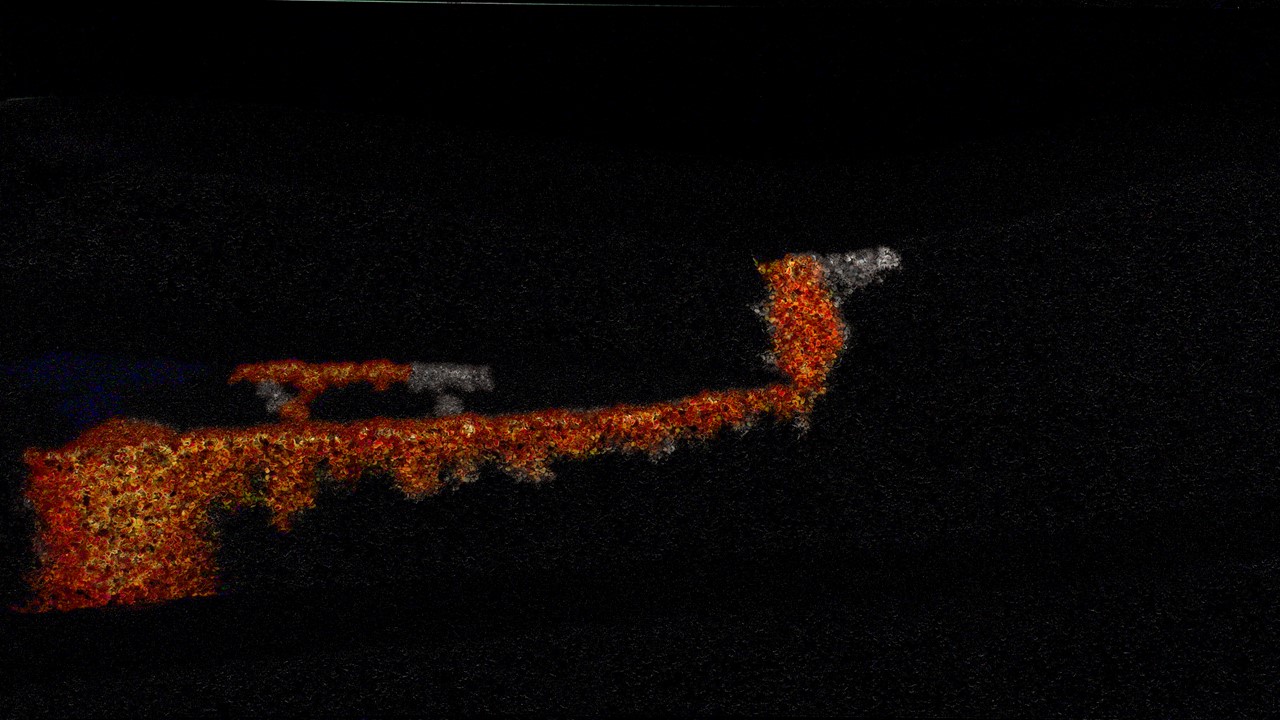Non-uniqueness in multiphase flow in porous media
Problem statement
The state-of-the-art description of multiphase flow in porous media leads to a set of well-posed equations describing mass and momentum balance in the underground, where the flow patterns are a unique consequence of the control parameters. Preliminary FluidFlower carbon sequestration experiments at the University of Bergen (UiB) contradicts this observation: the macroscopic multiphase flow patterns vary between repeated, identical experiments on the same setup. This rebuts the common explanation of spatially random fields for non-predictable flows and implies the importance of unexplained physical phenomena.
Physical variability can be addressed in repeated carbon dioxide (CO2) injection experiments using the same geological geometry (Figure 1), where non-uniqueness in multiphase flow in porous media is observed in real-time. Leveraging recent developments in stochastic invasion percolation models at Universität Stuttgart, the proposed project has a unique possibility to explore the predictable capabilities of models in the interface between data-driven modeling, incomplete physical characterizations, and subscale spatio-temporal stochastic processes.

Figure 1 – Non-uniqueness in repeated carbon sequestration experiments enable real-time study of physical variability. Warm colors indicate where flow patterns in two tests overlap, grey indicates where they diverge.
Methodology
The PhD project will evaluate model-to-data fit using laboratory-scale CO2 injection experiments combined with invasion-percolation (IP) numerical models. The laboratory activities include comprehensive description of each geological system studied, including geometries and multiphase flow parameters required for modelling. The FluidFlower framework enables visual monitoring of multi-scale, multiphase flows during porous media carbon sequestration from mm to m scales: residual, structural and dissolution CO2 trapping; gravity- and diffusion-dominated CO2 and water mixing; and buoyancy-driven CO2 migration. The numerical IP models, owing to their simplicity and low computational effort, are ideal to simulate multiphase flow in porous media for stochastical analysis. Further, they can be used over various length scales; this is particularly important in this project due to the rapid pore-scale (mm scale) displacement events in the near-injector area determines the onset of the rising CO2 plume (m scale). The IP modelling efforts will focus on the unexplained physics and non-uniqueness of observed flow patterns via model-to-experiment comparisons that evaluate model assumptions and hypotheses. We plan to develop a Bayesian approach to quantify the probability for each IP modeling concept to predict the experimentally observed flow patterns. Furthermore, we aim to achieve real-time coupling between laboratory data and modelling efforts through data assimilation and model update.
Research Environment
The outlined methodology requires strong integration between a unique laboratory infrastructure (UiB) and advanced stochastic IP modelling capability with Bayesian Inversion techniques (Uni Stuttgart). The complementary expertise in participating research groups does not exist within each institution. Porous media modeling expertise at UiB cannot capture the stochastic nature of the multiphase flows related to carbon sequestration described here. Hence, the project can only be achieved with true and long-term collaboration between UiB and Uni Stuttgart.
Impact
As an outcome, we expect to gain new understanding into the fundamental description of multiphase flows in porous media in the context of carbon sequestration. We also expect to achieve new methodological insights into approaching such complex and inherently uncertain systems in general. The objective, quantitative and reliable model-to-data comparison method from Uni Stuttgart (for IP models and data in the form of raster images) enables such comparisons at various scales of interest. Following the collaborative pathway between UiB and Uni Stuttgart we will address both the numerical uncertainty and the real system uncertainty in the same system to generate a quantitative goodness-of-fit metric to evaluate the model-to-data fit.

